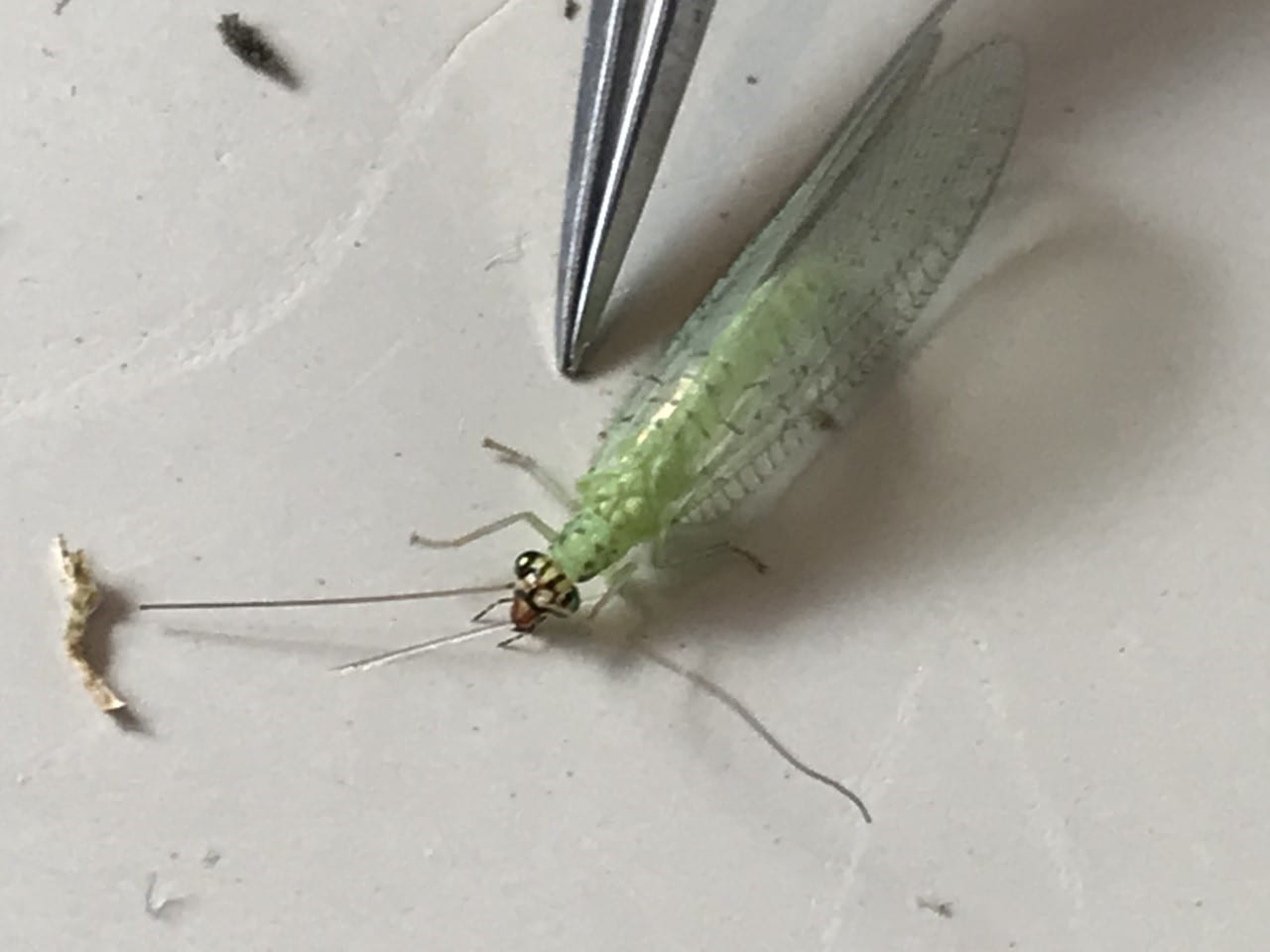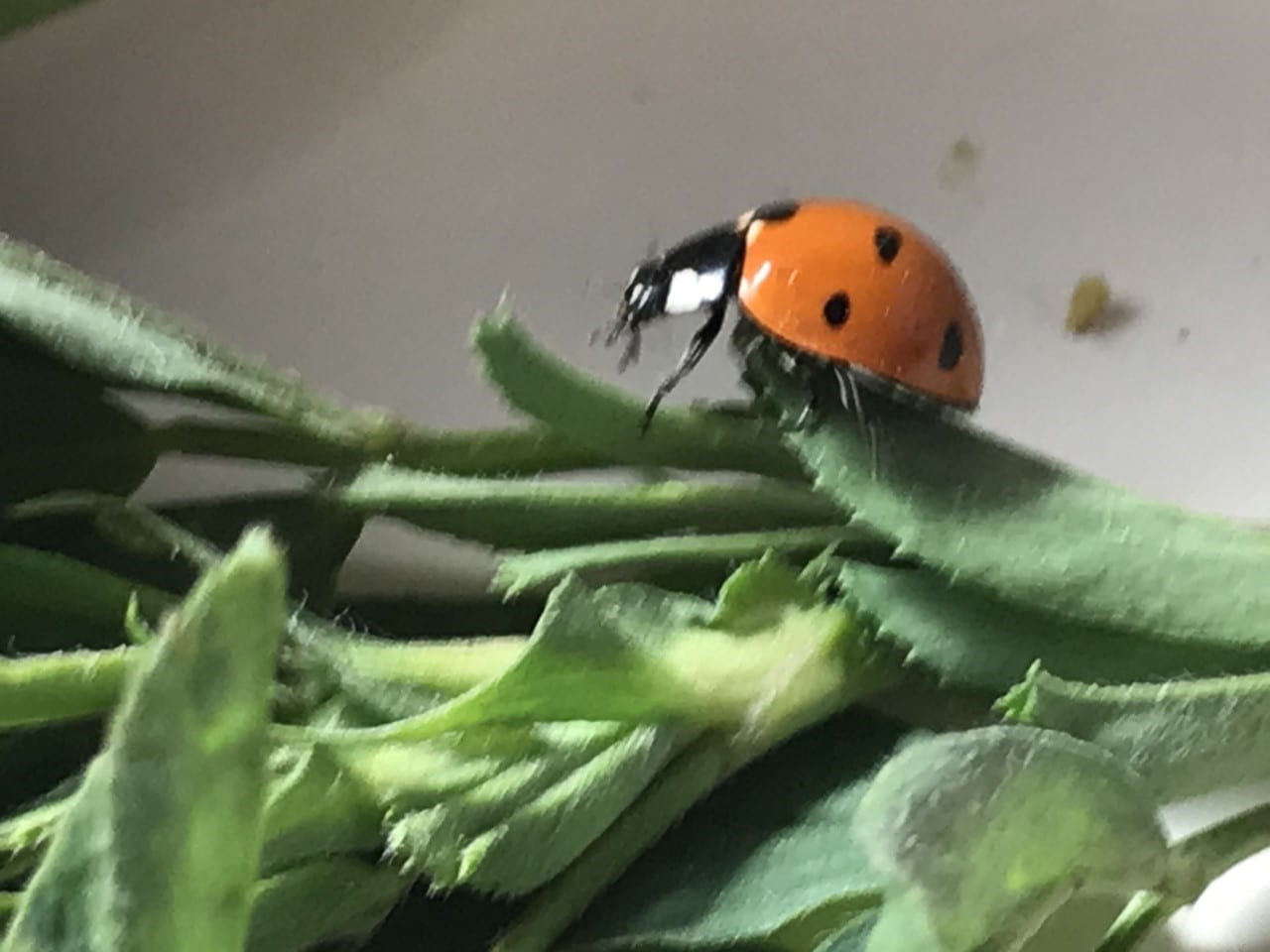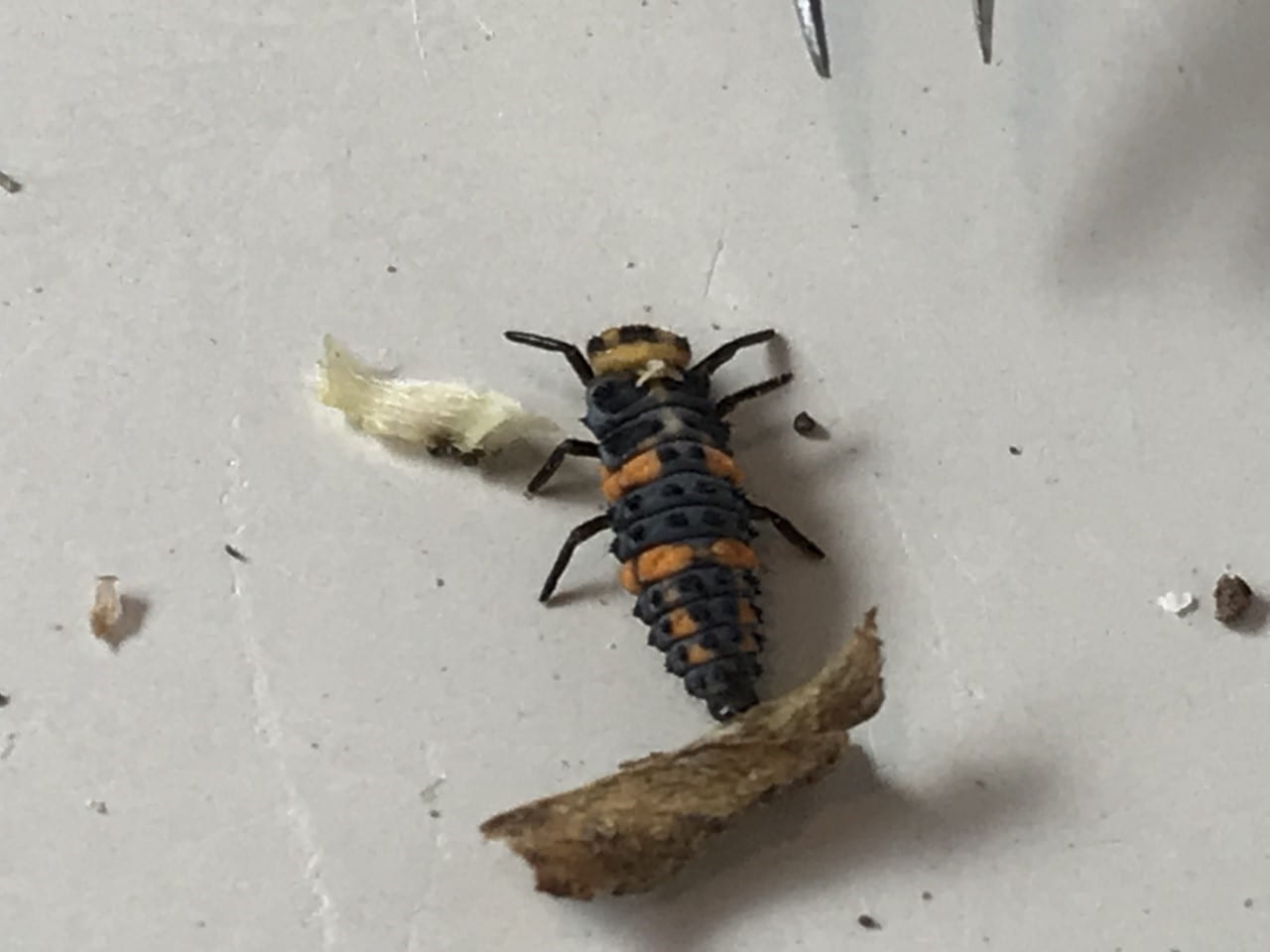–by Dr. Jeff Whitworth
Many alfalfa fields were sampled throughout north central Kansas over the last few days. Very few pea aphids were detected (fig 2.) – but those that remain are providing nutrition for many beneficials in alfalfa fields i.e., adult green lacewings and lady beetles (many) and lady beetle larvae (fig 3.). No alfalfa weevils were observed.
Figure 2 Pea aphids
Figure 3a Adult green lacewing
Figure 3b Adult ladybug
Figure 3c Lady beetle larva
However, potato leafhoppers, all adults, were collected in every field sampled (fig 4.). This indicates potato leafhoppers are immigrating into the state and will soon, if not already, be depositing eggs in stems, which soon hatch and thus increase populations. Potato leafhoppers remove plant juice and while so doing may inject a toxin into the plant. This feeding alone, may stress plants, especially in the often hot/dry conditions in July/August in Kansas. However, the introduction of a toxin may also negatively affect the plants. One characteristic symptom of potato leafhopper feeding starts out with yellowing from the tip of the leaves and travels through the leaf to the stem. This is often called “hopper burn” and can then negatively impact alfalfa production, both in quantity and quality by lowering the nutritional value.
Figure 4 Potato leafhopper




